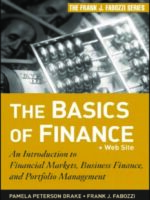This book attempts to deal with financing and investment decision making, with particular focus on the private sector of the UK economy. Its approach is to set out the theories that surround each area of financial decision making and relate these to what appears to happen in practice. Where theory and practice diverge, the book tries to reconcile and explain the differences.
It also attempts to assess the practical usefulness of some of the theories that do not seem to be applied widely in practice. Although the focus of the book is on the UK private sector, the theories and practices examined are, for the main part, equally valid in the context of the private sector of all the world’s countries.
Also, much of the content of the book is relevant to many parts of the public sector, both in the UK and overseas. Most of the organizations to which the subject matter of this book relates will be limited companies or groups of companies, though some may be partnerships, cooperatives or other forms. For simplicity, the word ‘business’ has been used as a general term for a business entity, reference being made to specific legal forms only where the issue under discussion relates specifically to a particular form.
The book attempts to make the subject as accessible as possible to readers coming to business finance for the first time. Unnecessarily technical language has been avoided as much as possible, and the issues are described in a narrative form as well as in more formal statements.
The more technical terms are highlighted in blue when they are first mentioned and these are included in the glossary at the end of the book. Detailed proofs of theoretical propositions have generally been placed in appendices to the relevant chapters. Readers should not take this to mean that these proofs are particularly difficult to follow. The objective was to make the book as readable as possible, and it was felt that sometimes formal proofs can disturb the flow if they are included in the main body of the text. Although the topics in the book are interrelated, the book has been divided into sections. Chapters 1 to 3 are concerned with setting the scene, Chapters 4 to 7 with investment decisions, and Chapters 8 to 12 with financing decision areas, leaving Chapters 13 to 16 to deal with hybrid matters. Some reviewers have made the point that the subject of Chapter 9 (capital market efficiency) pervades all aspects of business finance and should, therefore, be dealt with in an introductory chapter.
After some consideration it was decided to retain the same chapter order as in the previous editions. The logic for this is that a complete understanding of capital market efficiency requires knowledge that does not appear until Chapter 8. A very brief introduction to capital market efficiency appears at the beginning of Chapter 7, which is the first chapter in which capital market efficiency needs to be specifically referred to. It is felt that the chapter ordering provides a reasonable compromise and one that makes life as straightforward as possible for the reader.
In making revisions for this eighth edition, the opportunity has been taken to make the book more readable and understandable. Most of the practical examples have been Preface Preface xvi updated and expanded. Where possible, examples of practice in particular businesses are given. This should make the book more focused on the real business world.
More recent research evidence has been included, including that relating to the practical frailties of the capital asset pricing model. The opportunity has been taken to reflect the effects that adoption of International Financial Reporting Standards has had on the financial reports of most large businesses in many parts of the world, including the UK. The most obvious changes have been in the terminology used and the way that financial statements are set out. This edition also discusses the role and importance of private equity funds. Securitization has been introduced, as well as its link to US subprime mortgage loans.









Be the first to review “Business Finance: Theory And Practice”